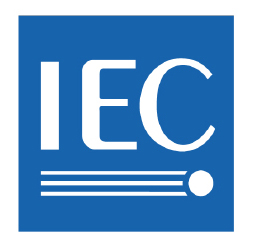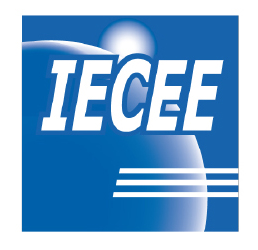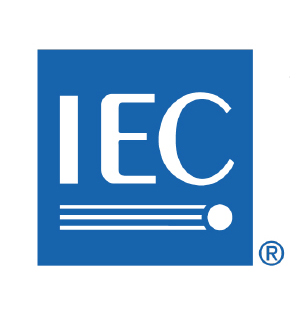Benning GmbH & Co.KG
Benning GmbH & Co.KG
| Address(es) |
|
| Website | http://de.benning.de/ |
| Status | MEMBER |
| Acceptance date | 2016-08-25 |
Further information
Stage | Country | Name |
|---|---|---|
2 | Slovenia |
LEGEND: Scope Limitations
- RA : Audio amplifiers with audio power > 0,5 Watts excluded
- RC : Apparatus with connection(s) to a cable distribution system excluded
- RSH : Shredders excluded
- RT : Apparatus with connection(s) to a telecommunication network excluded
- RV : CRT (cathode ray tubes)/ picture tubes, plasma/LCD or other video apparatus excluded
- ROUT : Equipment intended for installation outdoors excluded
- RWPT : Wireless power transmitter excluded
Category | Name | Tests/Clauses | Acceptance Date | Responsible National Certification Body |
|---|---|---|---|---|
INST | IEC 62477-1:2022 | 5.2.2.1: Clearance and creepage distances5.2.2.2: Non-accessibility test, including energy hazard test after disconnection*5.2.2.4.2.2: Steady force test 30N*5.2.2.4.2.2: Steady force test 250N*5.2.2.4.3: Impact test*5.2.3.4: AC or DC voltage test (dielectric strength test)5.2.3.6: Protective impedance test5.2.3.7: Touch current measurement test*5.2.3.8: Capacitor discharge test5.2.3.9: Limited power source, test including energy hazards test5.2.3.10: Temperature rise test5.2.3.11, 5.2.4.3: Protective equipotential bonding (except SCCR)5.2.4.4: Output short-circuit test5.2.4.5: Output overload test5.2.4.6: Breakdown of components test5.2.4.7: PWB short-circuit test5.2.4.8: Loss of phase test5.2.4.9.2: Inoperative blower test5.2.4.9.3: Clogged filter test5.2.6.3.1: Dry heat test5.2.6.3.2: Damp heat test | 2023-08-01 | |
INST | IEC 62477-1:2012 | 5.2.2.1: Clearance and creepage distances5.2.2.2: Non-accessibility test, including energy hazard test after disconnection*5.2.2.4.2.2: Steady force test 30N*5.2.2.4.2.2: Steady force test 250N*5.2.2.4.3: Impact test*5.2.3.4: AC or DC voltage test (dielectric strength test)5.2.3.6: Protective impedance test5.2.3.7: Touch current measurement test*5.2.3.8: Capacitor discharge test5.2.3.9: Limited power source, test including energy hazards test5.2.3.10: Temperature rise test5.2.3.11, 5.2.4.3: Protective equipotential bonding (except SCCR)5.2.4.4: Output short-circuit test5.2.4.5: Output overload test5.2.4.6: Breakdown of components test5.2.4.7: PWB short-circuit test5.2.4.8: Loss of phase test5.2.4.9.2: Inoperative blower test5.2.4.9.3: Clogged filter test5.2.6.3.1: Dry heat test5.2.6.3.2: Damp heat test | 2023-08-01 | |
INST | IEC 62477-1:2012/AMD1:2016 | 5.2.2.1: Clearance and creepage distances5.2.2.2: Non-accessibility test, including energy hazard test after disconnection*5.2.2.4.2.2: Steady force test 30N*5.2.2.4.2.2: Steady force test 250N*5.2.2.4.3: Impact test*5.2.3.4: AC or DC voltage test (dielectric strength test)5.2.3.6: Protective impedance test5.2.3.7: Touch current measurement test*5.2.3.8: Capacitor discharge test5.2.3.9: Limited power source, test including energy hazards test5.2.3.10: Temperature rise test5.2.3.11, 5.2.4.3: Protective equipotential bonding (except SCCR)5.2.4.4: Output short-circuit test5.2.4.5: Output overload test5.2.4.6: Breakdown of components test5.2.4.7: PWB short-circuit test5.2.4.8: Loss of phase test5.2.4.9.2: Inoperative blower test5.2.4.9.3: Clogged filter test5.2.6.3.1: Dry heat test5.2.6.3.2: Damp heat test | 2023-08-01 | |
ITAV | IEC 62368-1:2018 | B.2.5: Input test6.2.2.2: Power measurement for worst-case fault6.2.2.3:Power measurement for worst-case power source fault5.5.2.2: Capacitor discharge test5.2: Electrical energy source measurement5.4.1.4:Measurement of maximum operating temperatures for materials, components and systems5.4.1.8:Determination of working voltage9.2.5: Temperature testB.3.1 – B.3.8: Simulated abnormal operating conditions:- Covering of ventilation openings*- DC mains polarity test- Setting of voltage selector- Maximum load at output terminals- Reverse battery polarityB.4.1 – B.4.9 Simulated single fault conditions:- Blocked motor test- Short circuit of clearances for functional insulation- Short circuit of creepage distances for functional insulation- Short circuit and interruption of electrodes in tubes and semiconductors- Short circuit or disconnection of passive devices- Continuous operation of componentsG.5.3.3:Transformer overload test | 2020-06-19 | |
ITAV | IEC 62368-1:2014 | B.2.5: Input test6.2.2.2: Power measurement for worst-case fault6.2.2.3:Power measurement for worst-case power source fault5.5.2.2: Capacitor discharge test5.2: Electrical energy source measurement5.4.1.4:Measurement of maximum operating temperatures for materials, components and systems5.4.1.8:Determination of working voltage9.2.5: Temperature testB.3.1 – B.3.8: Simulated abnormal operating conditions:- Covering of ventilation openings*- DC mains polarity test- Setting of voltage selector- Maximum load at output terminals- Reverse battery polarityB.4.1 – B.4.9 Simulated single fault conditions:- Blocked motor test- Short circuit of clearances for functional insulation- Short circuit of creepage distances for functional insulation- Short circuit and interruption of electrodes in tubes and semiconductors- Short circuit or disconnection of passive devices- Continuous operation of componentsG.5.3.3:Transformer overload test | 2020-06-19 | |
OFF | IEC 60950-1:2005 | 1.6.2, 2.1.1.5, 2.1.1.7, 2.1.1.8, 2.2, 2.4, 2.5, 2.6, 2.10.2, 2.10.3, 2.10.4, 4.5.2, 5.2, 5.3, Annex C | 2016-08-25 | |
OFF | IEC 60950-1:2005/AMD1:2009 | 1.6.2, 2.1.1.5, 2.1.1.7, 2.1.1.8, 2.2, 2.4, 2.5, 2.6, 2.10.2, 2.10.3, 2.10.4, 4.5.2, 5.2, 5.3, Annex C | 2016-08-25 | |
OFF | IEC 60950-1:2005/AMD2:2013 | 1.6.2, 2.1.1.5, 2.1.1.7, 2.1.1.8, 2.2, 2.4, 2.5, 2.6, 2.10.2, 2.10.3, 2.10.4, 4.5.2, 5.2, 5.3, Annex C | 2016-08-25 | |
OFF | IEC 62040-1:2017 | 5.2.2.1: Clearance and creepage distance5.2.2.2: Non-accessibility test, including energy hazard test after disconnection5.2.2.3: Ingress protection test (IP rating) – IPX1 – IPX45.2.2.3: Enclosure integrity test5.2.2.4.2: Deflection test5.2.2.4.2.2: Steady force test, 30 N5.2.2.4.2.3: Steady force test, 250 N5.2.2.4.3: Impact test5.2.2.4.4: Drop test5.2.2.4.5: Stress relief test5.2.2.5: Stability test4.11.101: Cord guard test5.2.3.2: Impulse voltage test5.2.3.4: AC or DC voltage test (dielectric strength test)5.2.3.6: Protective impedance test5.2.3.7: Touch current measurement5.2.3.8: Capacitor discharge test5.2.3.9: Limited power source, test including energy hazards test5.2.3.10: Temperature rise test5.2.3.101 (Backfeed protection test)5.2.3.11, 5.2.4.3: Protective equipotential bonding5.2.3.102: Input current5.2.3.104: Transformer protection4.102.4: Case insulation test4.11.101: Wiring test5.2.4.4: Output short circuit test5.2.3.105: Unsynchronised load transfer test5.2.4.5: Output overload test5.2.4.6: Breakdown of components test5.2.4.7: PWB short-circuit test5.2.4.8: Loss of phase test5.2.4.9: Cooling failure test5.2.4.9.2: Inoperative blower test5.2.4.9.3: Clogged filter test5.2.6.3.1: Dry heat test5.2.6.3.2: Damp heat test | 2021-08-23 | |
OFF | IEC 62040-1:2008 | 4.6, 5.1.1, 5.2.1, 5.2.3, 5.2.5, 5.7, 7.7, 8.3 | 2016-08-25 | |
OFF | IEC 62040-1:2008/AMD1:2013 | 4.6, 5.1.1, 5.2.1, 5.2.3, 5.2.5, 5.7, 7.7, 8.3 | 2016-08-25 |



